Chichibu Night Festival 2025: Dates, Highlights, and Access

Chichibu Yomatsuri (Chichibu Night Festival) is an annual festival held on December 2 and 3 at Chichibu Shrine in Chichibu, Saitama. With a history of about 300 years, it is listed as a UNESCO Intangible Cultural Heritage.
Chichibu Yomatsuri: A Night Festival Designated World Heritage
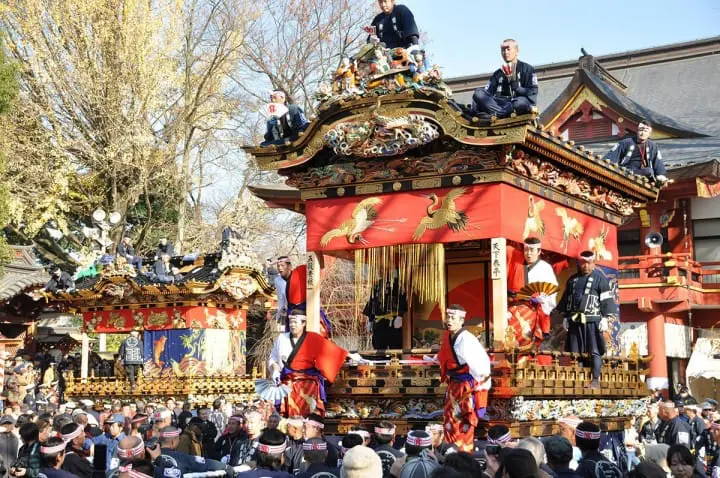
Image courtesy of Chichibu Travel Department
The Chichibu Night Festival (Chichibu Yomatsuri) is held each year in Chichibu City, Saitama Prefecture, as the annual festival of Chichibu Shrine.
With a history of about 300 years, it is listed on UNESCO’s Intangible Cultural Heritage list and on Japan’s Important Intangible Folk Cultural Properties.
2025 Schedule of the Chichibu Night Festival

Image courtesy of Chichibu Travel Department
The Chichibu Night Festival is held every year for two days on December 2 and 3. Check the schedule below for details, and don’t miss the festival’s highlight—the Grand Festival—held on December 3.
Held Annually on December 2nd and 3rd
December 2: Yoimiya Festival (Festival Eve). Floats are moved around from morning, and colorful fireworks light up the night.
December 3: Taisai (Grand Festival), the event’s peak. Floats are paraded from the morning, and at 18:00 festival-goers form a goshinko procession that walks about 1 km from Chichibu Shrine to Otabijo. Leading the procession are men dressed in Heian-period costumes, followed by all six floats. The procession and floats typically arrive at Otabijo around 22:00.
Chichibu Night Festival official website: https://www.chichibuji.gr.jp/yomaturi2025/ (Japanese)
Highlights of the Chichibu Night Festival
1. The Hikimawashi Procession
A highlight is the hikimawashi—the procession of richly decorated festival floats (dashi) hung with countless paper lanterns. The unique way these floats are pulled distinguishes the festival and ranks it among Japan’s three great float-pulling festivals, alongside Kyoto’s Gion Festival and the Takayama Festival in Gifu.
The Chichibu Night Festival features two types of floats: yatai (portable shrines) and kasaboko (platforms topped with an umbrella-like structure and a halberd). Four yatai and two kasaboko appear in the festival. Each has a robust frame that can hold up to ten people; some weigh more than twenty tons.
The striking appearance of the yatai and kasaboko, combined with the energetic way the crowds maneuver the massive floats, is a major part of the festival’s appeal.
*1 Hikimawashi: pushing and pulling of the dashi while moving through the city.
*2 Dashi: Large floats used during Japanese festivals, usually pulled around by men. Their name varies depending on the region – hikiyama, yatai, danjiri.
2. Winter Fireworks
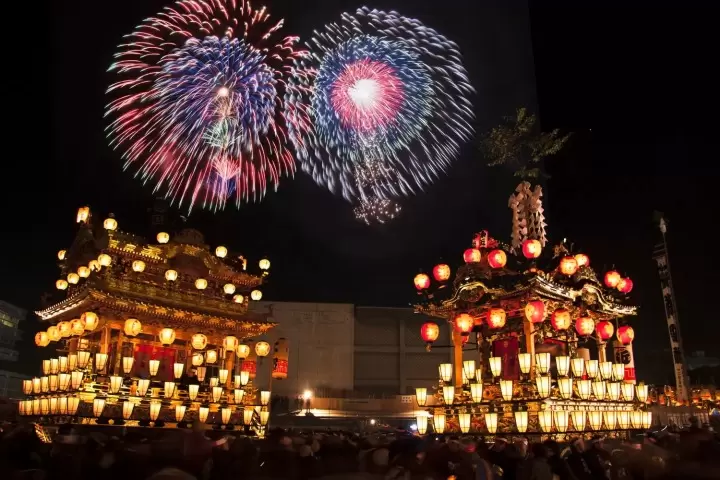
Photo by Pixta
Winter fireworks are rare in Japan, making the Chichibu Night Festival’s display especially memorable. Against the clear winter sky and the festival’s ornate floats in the foreground, the fireworks create a truly breathtaking spectacle.
The Chichibu Night Festival fireworks schedule is as follows:
- December 2 (Tue) — 19:00–20:00: single fireworks, starmine (370 shots)
- December 3 (Wed) — 19:30–21:55: fireworks festival (4,100 shots)
Launch site: Inside Hitsujiyama Park (access restricted during certain times)
Good vantage points for the fireworks on December 3 include:
- Along National Route 140, between the traffic light in front of Seibu-Chichibu Station and the Uenomachi intersection
- Chichibu City Hall parking lot (official fireworks viewing area)
- In front of Seibu-Chichibu Station
How to Find Chichibu Yomatsuri’s Venue from the Station
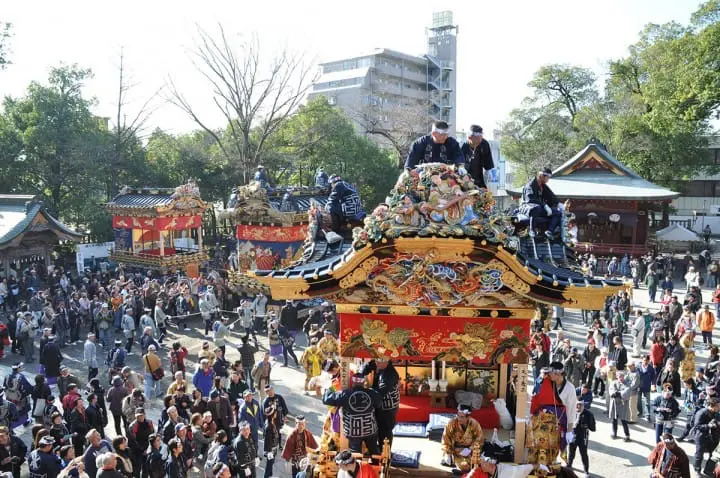
Image courtesy of Chichibu Travel Department
The Chichibu Night Festival centers around Chichibu Shrine. To get there from Tokyo:
- From Tokyo Station, take either the Tokyo Metro Marunouchi Line (about 17 minutes) or the JR Yamanote Line (about 24 minutes) to Ikebukuro Station — fare around 200 yen.
- At Ikebukuro, transfer to the Seibu Limited Express Chichibu bound for Seibu-Chichibu. The journey takes about 1 hour 20 minutes and costs 1,480 yen.
- From Seibu-Chichibu Station, it’s a pleasant 15-minute walk to Chichibu Shrine.
Chichibu Shrine
Address: Saitama, Chichibu, Banbacho 1-3
Website: http://www.chichibu-jinja.or.jp/index.htm (Japanese)
Girimawashi and Yatai-hikiodori: Main Highlights of Chichibu Yomatsuri
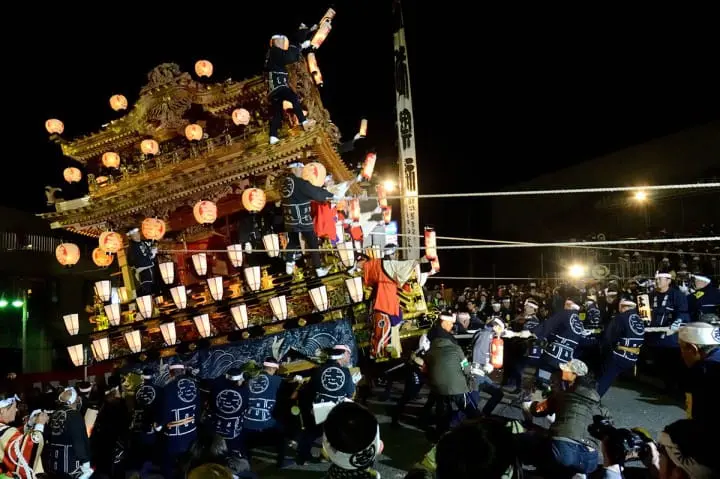
Image courtesy of Chichibu Travel Department
A must-see at the Chichibu Night Festival (Chichibu Yomatsuri) is the reversed pulling, or girimawashi, of the yatai and kasaboko.
Performed to the beat of kodaiko (small taiko drums), this spectacular finale sees the massive platforms rotated and tilted in time with the drumming—an impressive, dramatic climax to the event.
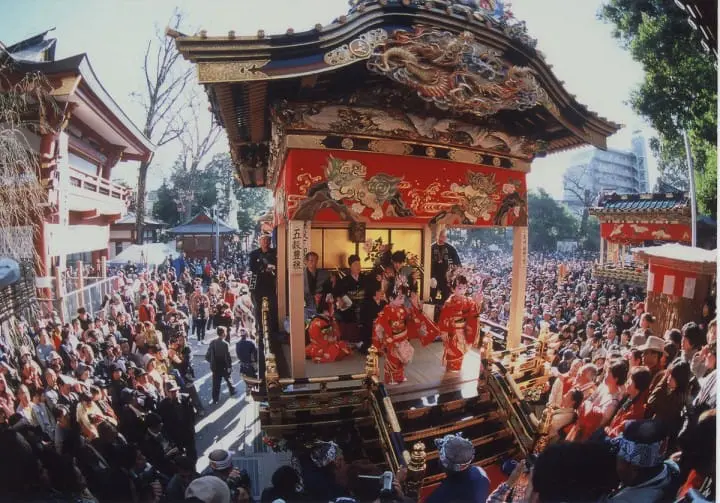
Image courtesy of Chichibu Travel Department
Be sure not to miss the flamboyant yatai-hikiodori—the dance-and-music performances staged atop the yatai platforms. Dancers in elaborate costumes perform to shamisen music, creating a lively, energetic atmosphere for spectators.
The dances are presented in multiple locations, including in front of the shrine gates and at key corners around the city, so you can experience the vibrant mood from many vantage points.
*3 Shamisen: a Japanese three‑stringed instrument whose soundbox is traditionally covered with cat or dog skin.
Average December temperatures in Chichibu are about 3.8°C and fall further at night. Dress warmly: wear a cozy sweater and a heavy coat, and bring gloves and a scarf to stay comfortable while enjoying the festival.




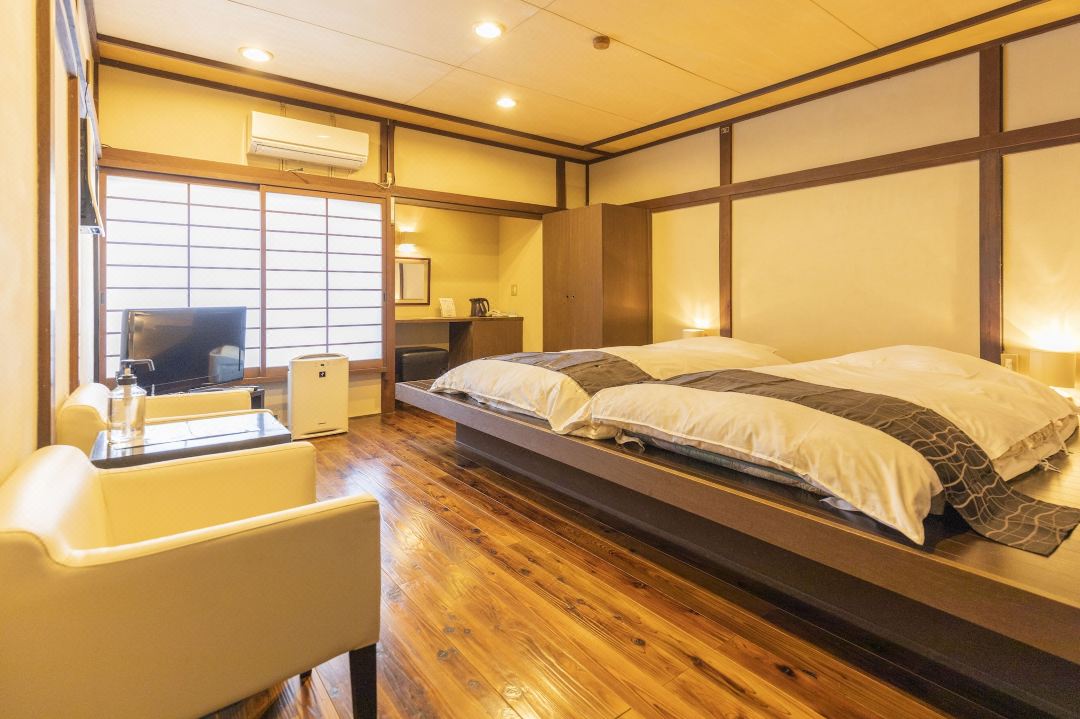

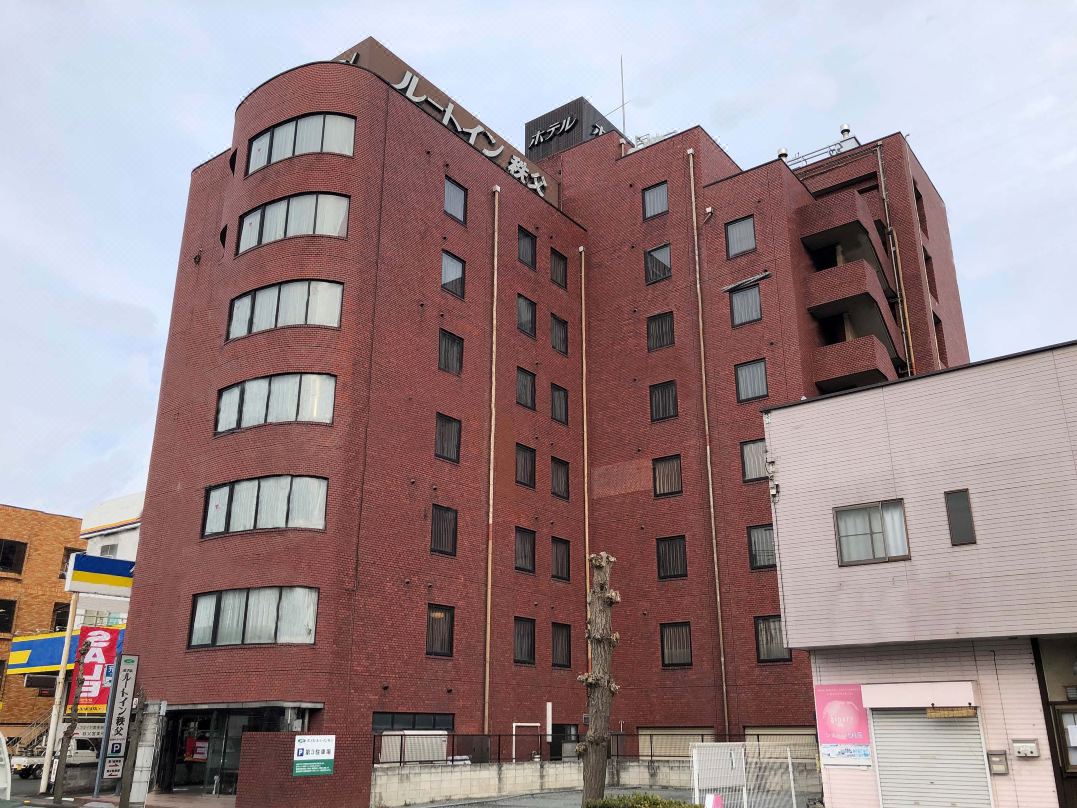










































![[Yamanashi/ Hokuto City] 4 Hot New Spots Opening in 2026](https://resources.matcha-jp.com/resize/720x2000/2025/12/12-252747.webp)



